INTERNI: Turenscape-Nature Guiding Design
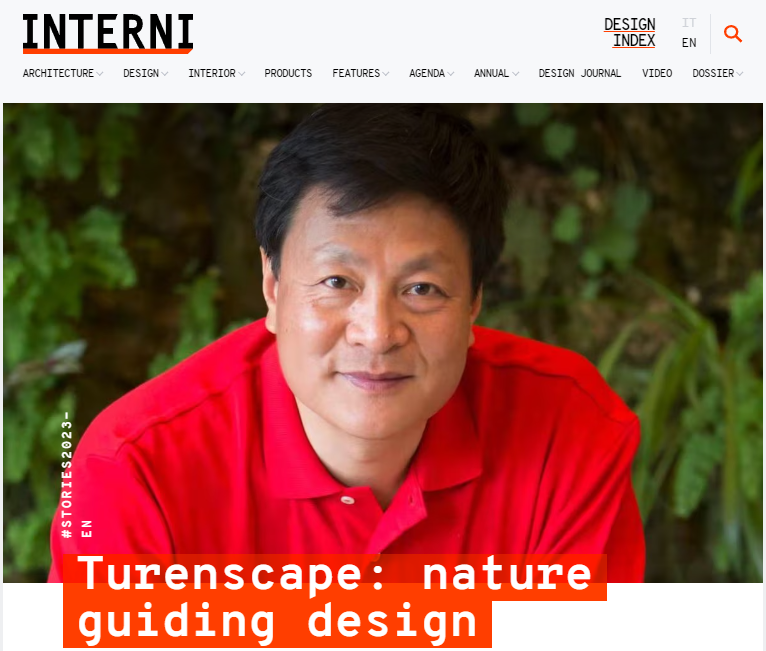
Kongjian Yu of the Turenscape studio is the undisputed master of the Sponge Cities: observing his work teaches us how to redesign landscapes and inhabited places inspired by nature
Too much, too little. With the impacts of climate change, water from being a precious resource can easily turn into an environmental disaster.
This is the case of the Chinese city of Zhengzhou, in the Henan region, which last year faced the heaviest rain ever and devastating floods that killed at least 300 people and displaced 1.24 million residents. It is evident that a rethinking of how we inhabit the planet is urgently needed and overturning how, for centuries, we have designed infrastructures in order to dominate and control nature, instead of creating a circular and virtuous relationship.
Master in doing this kind of operations is Kongjian Yu who, with his design studio Turenscape, carries out experimentation and evocative and important projects to set new design models. The basic idea of him? That we have the responsibility to make nature our teacher, because she has a lot to teach us.
In particular, the Sponge Cities approach teaches us that innovation can be based on local knowledge and territory, that indispensable piece in the motto 'think global, act locally'.
See also: From cities to terry landscapes: projects from around the world
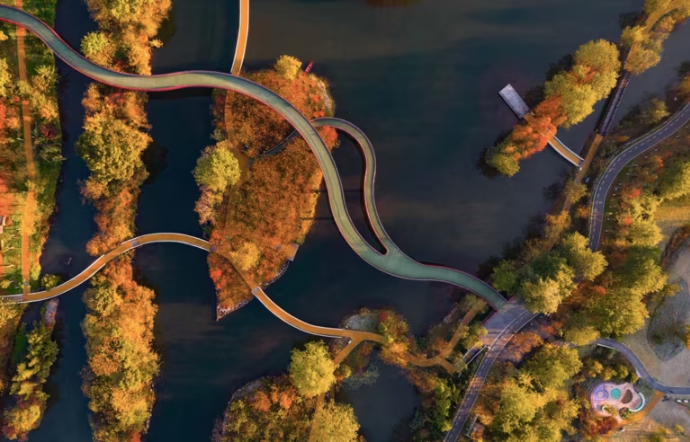
Turenscape website, corridoi sul fiume
Create an ecological infrastructure
So what role does the landscape architect have? As emerges from the report drawn up by Kongjian Yu The Art of Survival "the profession must re-evaluate the vernacular of the land and the people and lead in urban development through the planning and design of an ecological infrastructure, through which the landscape can be created and preserved as the link between the land, the people and the spiritual dimension".
Landscape architecture can be the means to respond to the environmental crisis by placing a concept of more sustainable development at the centre, for humans and for the planet.
This is an approach that characterizes many designers around the world: think of the work of Sameep Padora in India, of Andreas Kipar, Bas Smets e Michel Desvigne in Europe.
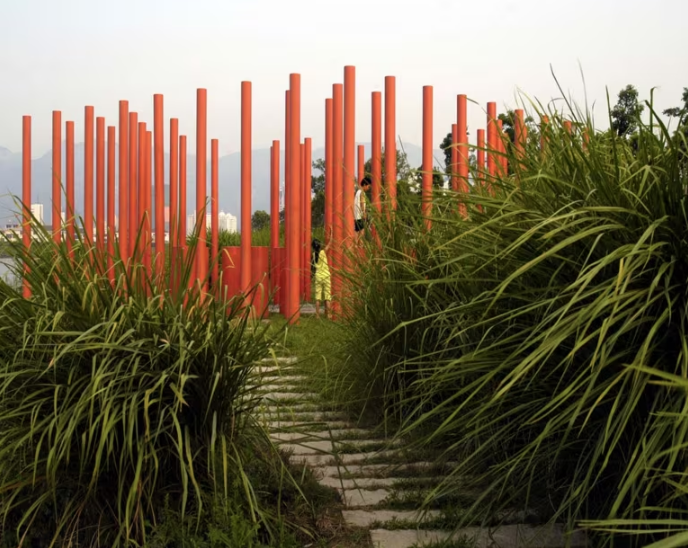
Yongning River Park_via Turenscape website
Nature, culture and identity
With his illuminating projects Kongjian Yu invites us to set up planning keeping culture and identity in mind but connecting the reason for our existence to the earth. And implementing horizontal processes that integrate human development and ecological protection.
On the one hand, water and on the other, time as an element with which to listen to imagine: Kongjian Yu has been talking about all this since 1996, which can be summarized in the concept of an ecological infrastructure that evolves to protect the biodiversity and not as a direction of greedy consumption.
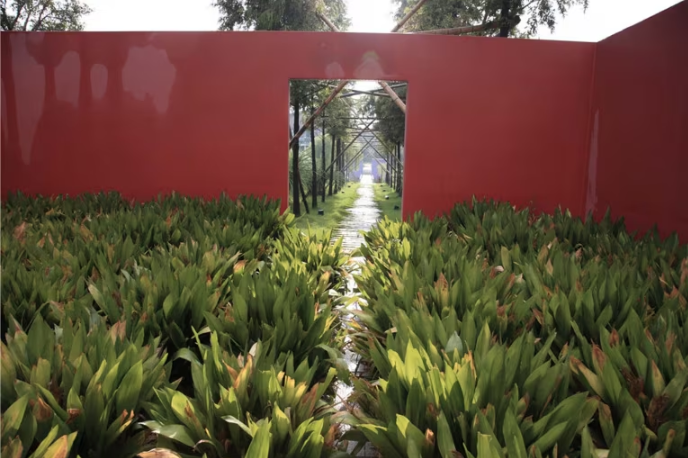
Yongning River Park via Turenscape website
Yongning River Park: A landscape that dances with the floods
This iconic project by the Turenscape studio demonstrates that landscape architecture is an art of survival and that very simple skills and common native plants can be used to solve big problems.
It is a 21-hectare park along the Yongning River, the mother river of the historic city of Huangyan on China's east coast.
Having removed the concrete embankments, a useless solution applied to manage floods, the garden is designed according to systems of floating land parcels, a system of wetlands which become part of the wild nature of the park and relate to the river following its flows.
A garden that dances, that absorbs, slows down the impulses and, in drier periods, returns humidity to the earth and is inhabited by tourists and locals.
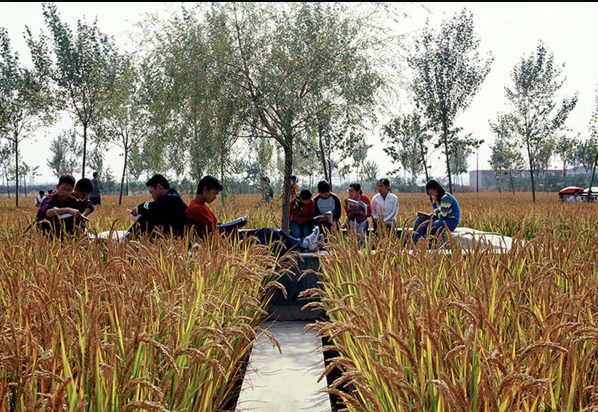
Shenyang Architectural University Campus via Turenscape website
Shengyang Jianzhu University Rice Field: From Catastrophe to Agricultural Production
This project demonstrates how agriculture can become part of the urbanized environment and how the identity of a place can also be created through one of the most common landscapes: the agricultural one.
"The overwhelming process of urbanization in China is inevitably invading a large amount of cultivable land. – they explain on the Turenscape website - With a population of 1.3 billion people and Limited arable land resources, food production and sustainable land use are the biggest problem in China."
This project highlights how the landscape architect's challenge is never only to produce beauty but also to respond to the concrete needs of those who live and use that portion of land.
The campus garden uses rice and other native crops, increasing students' awareness of the land and what it feeds on.
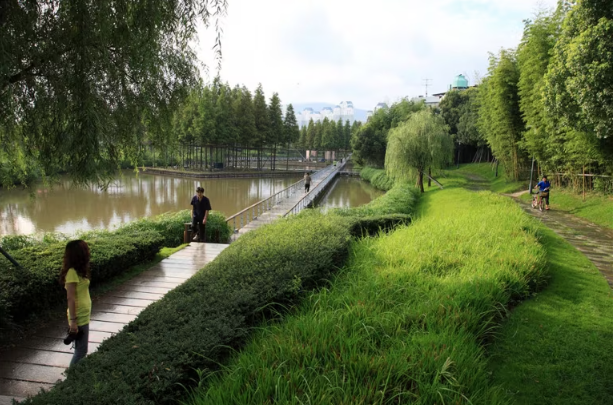
Yongning River Park via Turenscape website
Source: https://www.internimagazine.com/features/turenscape-kongjian-yu/
